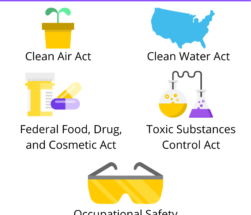In today’s fast-paced world, transportation plays a vital role in the success of any business. From goods delivery to logistics, enhancing transportation efficiency can lead to significant cost savings. With technology advancements, transportation optimization has become a key strategy adopted by companies to streamline their operations, reduce expenses, and boost overall productivity.
The Importance of Transportation Optimization
Transportation optimization involves finding the most efficient and cost-effective ways to move goods from one location to another. It takes into account factors such as distance, time, fuel consumption, vehicle capacity, and route optimization. By optimizing transportation, businesses can effectively reduce costs, enhance customer satisfaction, and improve their bottom line.
Utilizing Technology for Transportation Optimization
Advancements in technology have revolutionized the transportation industry, providing businesses with powerful tools to optimize their operations. The integration of smart devices, data analytics, and artificial intelligence has enabled companies to make informed decisions and drive significant cost savings in their transportation processes.
Route Optimization
One of the primary areas where technology has made a substantial impact is in route optimization. With the help of GPS and mapping software, businesses can analyze various routes and select the most efficient and cost-effective options. By choosing the optimal route, companies can reduce fuel consumption, minimize vehicle wear and tear, and decrease transportation time, resulting in significant cost savings.
Load Optimization
Transporting goods can be a complex task, especially when considering the optimal load distribution for each vehicle. Technology plays a crucial role in load optimization, ensuring that trucks are utilized to their full capacity. By utilizing load optimization software, businesses can efficiently manage load distribution, reducing the number of trips required, and ultimately minimizing transportation costs.
Real-Time Data Analysis
Real-time data analysis is another essential aspect of transportation optimization. By leveraging IoT sensors and data analytics, businesses can monitor their transportation processes in real-time. This allows them to identify areas of inefficiency, detect potential bottlenecks, and make necessary adjustments to optimize operations and reduce costs. Real-time data analysis also provides insights into driver behavior, enabling businesses to encourage fuel-efficient driving practices, further lowering transportation expenses.
Implementing Transportation Optimization Strategies
While technology plays a pivotal role in transportation optimization, businesses must also implement effective strategies to achieve cost savings. Here are some essential steps companies can take:
Establish Clear Objectives
Define clear objectives for transportation optimization, such as reducing costs by a certain percentage or improving delivery times. These objectives will serve as guiding principles to steer the optimization process in the right direction.
Collaborate with Stakeholders
Engage with all stakeholders involved in the transportation process, including suppliers, carriers, and customers. Collaboration with these key players allows for better coordination and communication, ensuring optimization efforts are aligned with the overall business objectives.
Invest in Training
Provide training to drivers and other employees involved in the transportation process. Educate them on the importance of transportation optimization and equip them with the skills and knowledge needed to execute optimization strategies effectively. Driver training programs can focus on fuel-efficient driving techniques and adherence to optimized routes.
Continuous Monitoring and Evaluation
Regularly monitor and evaluate the transportation processes to identify areas of improvement. Utilize the data collected from IoT sensors and advanced analytics tools to identify inefficiencies and make necessary adjustments. Implement a system of continuous improvement to ensure transportation optimization remains a priority and that cost savings are sustained.
The Benefits of Transportation Optimization
By adopting transportation optimization strategies, businesses can gain various benefits, including:
Significant cost savings through reduced fuel consumption and improved efficiency.
Enhanced customer satisfaction due to shorter delivery times and increased reliability.
Reduced environmental impact with fewer emissions and minimized carbon footprint.
Improved overall operational efficiency, leading to increased productivity and profitability.
In Conclusion
Transportation optimization is no longer just a buzzword; it is a necessity for businesses operating in today’s competitive landscape. Through the implementation of technology, data analysis, and efficient strategies, companies can achieve substantial cost savings, improve customer satisfaction, and drive overall success. Embracing transportation optimization is an investment that pays off in the long run, positioning businesses at the forefront of the industry and ensuring their sustained growth and profitability.









